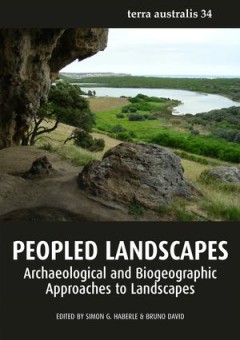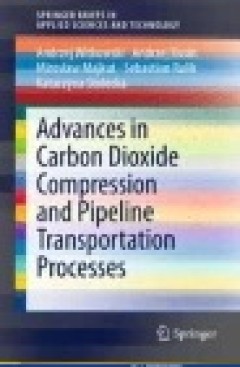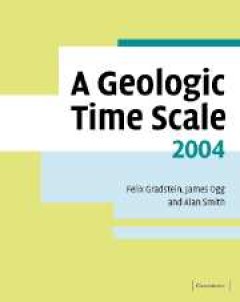Filter by

Peopled Landscapes: Archaeological and Biogeographic Approaches to Landscapes
This impressive collection celebrates the work of Peter Kershaw, a key figure in the field of Australian palaeoenvironmental reconstruction. Over almost half a century his research helped reconceptualize ecology in Australia, creating a detailed understanding of environmental change in the Late Pleistocene and Holocene. Within a biogeographic framework one of his exceptional contributions was t…
- Edition
- -
- ISBN/ISSN
- 9781921862724
- Collation
- -
- Series Title
- -
- Call Number
- 930.1 HAB p

The Routledge Companion to Actor-Network Theory
This companion explores ANT as an intellectual practice, tracking its movements and engagements with a wide range of other academic and activist projects. Showcasing the work of a diverse set of ‘second generation’ ANT scholars from around the world, it highlights the exciting depth and breadth of contemporary ANT and its future possibilities.The companion has 38 chapters, each answering a …
- Edition
- -
- ISBN/ISSN
- 9781351619738
- Collation
- -
- Series Title
- -
- Call Number
- 912 ROU r

Media : On the Motion of Inanimate Objects in Aristotle’s Physics and On th…
This book presents a recasting of Aristotle’s theory of spatial displacement of inanimate objects. Aristotle’s claim that projectiles are actively carried by the media through which they move (such as air or water) is well known and has drawn the attention of commentators from ancient to modern times. What is lacking, however, is a systematic investigation of the consequences of his suggest…
- Edition
- 1
- ISBN/ISSN
- 978-3-319-21263-0
- Collation
- XVII, 118
- Series Title
- -
- Call Number
- 900

Joro's Youth : The first part of the Mongolian epic of Geser Khan
The epic of King Gesar of Ling is the national oral epic of Tibet, sung by itinerant bards in their land for many centuries but not recorded in print until recent times. Spreading widely beyond Tibet, there are extant versions in other languages of Central Asia. The first printed version is from Mongolia, produced on the orders of the Kangxi emperor of the Manchu Qing dynasty in the early 18th …
- Edition
- -
- ISBN/ISSN
- 9781760460822
- Collation
- -
- Series Title
- -
- Call Number
- 920 RAC j

Working Together in Vanuatu Research Histories, Collaborations, Projects and…
This collection is derived from a conference held at the Vanuatu National Museum and Cultural Centre (VCC) that brought together a large gathering of foreign and indigenous researchers to discuss diverse perspectives relating to the unique program of social, political and historical research and management that has been fostered in that island nation. While not diminishing the importance of ind…
- Edition
- -
- ISBN/ISSN
- -
- Collation
- -
- Series Title
- -
- Call Number
- -

Age and Work Advances in Theory, Methods, and Practice
"Research on age(ing) and work often draws upon lifespan development perspectives to explain how adults “age successfully,” managing developmental gains and losses and maintaining well-being and functioning over time. There are a multitude of similar theories to consider to this end, which is both a blessing and a curse for researchers. In this chapter, we introduce a conceptual integration…
- Edition
- -
- ISBN/ISSN
- 9781003089674
- Collation
- -
- Series Title
- -
- Call Number
- -

A Geological Manual
Henry De la Beche (1796–1855) was a geologist who published widely on various aspects of this science and was elected to the Royal Society in 1823. He was involved with the Ordnance Survey maps of Britain, and became president of the Geological Society in 1847. De la Beche was also instrumental in the 1851 opening of two influential institutions: the Museum of Practical Geology and the School…
- Edition
- -
- ISBN/ISSN
- 9780511973307
- Collation
- -
- Series Title
- -
- Call Number
- -

A Geologic Time Scale 2004
An international team of over forty stratigraphic experts have helped to build the most up-to-date international stratigraphic framework for the Precambrian and Phanerozoic. This successor to A Geologic Time Scale 1989 by W. Brian Harland et al. (CUP 0521 387655) begins with an introduction to the theory and methodology behind the construction of the new time scale. The main part of the book is…
- Edition
- -
- ISBN/ISSN
- 9780511536045
- Collation
- -
- Series Title
- -
- Call Number
- -

A Geognostical Essay on the Superposition of Rocks in Both Hemispheres
The explorer and multi-disciplinary scientist Alexander von Humboldt (1769–1859) was a prominent figure in the European scientific community of the eighteenth and nineteenth centuries and the first to make a scientific survey of South and Central America. His travels alone brought him widespread recognition, but the extensive field notes and research he undertook were developed further on his…
- Edition
- -
- ISBN/ISSN
- 9781139226875
- Collation
- -
- Series Title
- Cambridge Library Collection - Earth Science
- Call Number
- -

Initial Results from the Fast Imaging Solar Spectrograph (FISS)
Describes the instruments and initial results of the Fast Imaging Solar Spectrograph (FISS) at the Big Bear Solar Observatory. This collection of papers describes the instrument and initial results obtained from the Fast Imaging Solar Spectrograph (FISS), one of the post-focus instruments of the 1.6 meter New Solar Telescope at the Big Bear Solar Observatory. The FISS primarily aims at inves…
- Edition
- -
- ISBN/ISSN
- 978-3-319-12122-2
- Collation
- VII, 136
- Series Title
- -
- Call Number
- 530 INF
 Computer Science, Information & General Works
Computer Science, Information & General Works  Philosophy & Psychology
Philosophy & Psychology  Religion
Religion  Social Sciences
Social Sciences  Language
Language  Pure Science
Pure Science  Applied Sciences
Applied Sciences  Art & Recreation
Art & Recreation  Literature
Literature  History & Geography
History & Geography